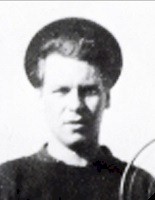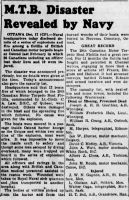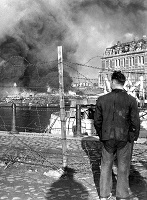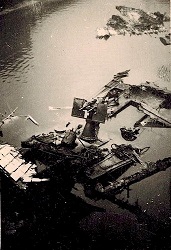|
 For Posterity's Sake
For Posterity's Sake

A Royal
Canadian Navy Historical Project
29th MTB Flotilla

29th Motor Torpedo Boat Flotilla
RCN photo

Click on the above images to view a
larger photo and the full press release
The
29th MTB Flotillia was formed in March 1944 under the command of Lt Anthony
Law, RCNVR and equipped with eight British Type 'G' MTBs. The flotilla
initally worked up at HMS Bee (Coastal Forces Base at Holyhead) in April
1944 before moving to HMS Fervent (Coastal Forces Base at Ramsgate) in May
1944.
The
first mission assigned to the 29th MTB Flotilla was given to MTBs
460,462,464 and 465. Tasked with escorting a clandestine mine gathering
expedition to the German controlled Normandy coast, on 16 May 1944 the
Canadian MTBs proceeded to the French Coast along with two British MTBs,
protecting them as volunteers were landed ashore by outboards to lift sample
mines from the German beach defence. Managing to accomplish their mission
undetected, the captured mines provided much needed intelligence prior to
the Allied D-Day landings.
Between
20 and 22 May 1944, the 29th MTB Flotilla joined RCN Tribal-class destroyers
and the 65th MTB Flotilla in intercepting enemy coastal convoys in the
English Channel. Targeting German schnellboote (E-boats), escort ships,
merchant vessels; the MTBs lured German destroyers within the gun range of
accompanying heavier warships. Following this success, on 27 May 1944 the
29th MTB Flotilla moved to HMS Hornet Coastal Forces Base at Gosport
(Portsmouth), in preparation for Operation Neptune in June 1944.
During
the Normandy invasion on June 6, 1944, the 29th Flotilla was tasked with
guarding the east flank of the invasion fleets, while the 65th Flotilla was
assigned to protect the western flank. Following the invasion, the MTBs of
the 29th Flotilla patrolled the 15 km distance between the eastern edge of
the assault area and the German naval base at Le Havre. Each night three or
four Canadian MTBs waited until larger Allied ships tracked the German
surface ships attempting either to attack the allied assault area or
transport supplies into Le Havre. Typically, short, sharp engagements
followed, with the Germans turning back to safety once they realized Allied
forces were in place.
Based
at HMS Beehive, Felixstowe in October 1944, the 29th Flotilla was later
transferred to Coastal Forces Mobile Unit (CFMU) No. 1, Ostend,
Belgium.
The
destruction of the 29th MTB Flotilla at Ostend
On
the afternoon of February 14, 1945, disaster struck the Canadian 29th Motor
Torpedo Boat flotilla docked in Ostend (Oostende), Belgium. Fuel that had
been spilled in the harbour suddenly ignited and, before an alarm could be
raised, a fire quickly spread amongst the closely-moored vessels. Fuel and
ammunition supplies exploded as boat after boat caught fire. Many of the men
were trapped on board and had no escape as even the water was aflame. By the
time it was over, 26 Canadian sailors and MTBs 459, 461, 462, 465 &
466 were lost in the accident. The 29th Flotilla was subsequently
disbanded with the remaining vessels attached to other RN flotillas.
Thirty-five British sailors and
seven Royal Navy vessels had also been lost.
|
Sailors
of the 29th MTB Flottilla killed that day...
Buried
in Adegem Canadian War Cemetery:
Stoker
1st Class Gordon Purdy, age 28 of St Catharines, ON
Able
Seaman Benson Dick, age 25 of Hensall, ON
Able
Seaman Joe Gauthier, age 20 of Winnipeg, MB
Buried
in Oostende New Communal cemetery:
Ordinary
Telegraphist John Brush, age 18 of Windsor, ON
Able
Seaman Albert Cross, age 19 of Yorkton, SK
Leading
Seaman Ralph MacRae, age 21 of Campbellton, NB
Commemorated
on the Halifax Memorial (bodies not recovered)
Motor
Mechanic John Watt, age 23 of Deep Cove, BC
Motor
Mechanic John Routh, age 28 of Canoe, BC
Able
Seaman David Motley, age 23 of Bonnington Falls, BC
Ordinary
Telegraphist Melvin Harper, age 21 of Edmonton, AB
Motor
Mechanic Ian Hunter, age 30 of Calgary, AB
Able
Seaman William Crang, age 21 of Outlook, SK
Lieutenant
William Hale, age 21 of Winnipeg, MB
Able
Seaman Wilfred Brown, age 21 of Guelph, ON
Able
Seaman James Kenny, age 20 of Woodstock, ON
Ordinary
Seaman Gordon Long, age 18 of Woodstock, ON
Able
Seaman Norman Cathcart, age 19 of Toronto, ON
Able
Seaman John Byrne, age 20 of Toronto, ON
Able
Seaman William Newbigging, age 19 of Toronto, ON
Able
Seaman William Park, age 20 of Hamilton, ON
Stoker
Charles Long, age 27 of Hamilton, ON
Able
Seaman Michael Naydo, age 25 of Fort William, ON
Telegraphist
Stephen Bahleda, age 22 of Montreal, PQ
Able
Seaman Neil Bond, age 20 of Glace Bay, NS
Able
Seaman James Wright, age 23 of New Glasgow, NS
Motor
Mechanic William Wellington , age 39 of Cardiff, Wales
|

Photo source/ credit - facemepls
flickr photo collection |
Members
of the 29th MTB injured in the fire and explosion on 14 Feb 1945
|
Name
|
Given names / Initials
|
Rate
|
Next of Kin
|
|
Allsop
|
C.L.
|
OS
|
Mrs. Leah Irene Allsopo (mother) R.R. 2,
Lambeth ON
|
|
Bell
|
H.T.
|
AB
|
Mrs. C. Bell (mother) Grandview, MB
|
|
Bergeron
|
L.P.
|
Sto 1c (M)
|
Mr. Mer Bergeron (father) 711A Montreal Rd,
Cornwall ON
|
|
Carr
|
John
|
Sto (M)
|
Mrs. J. Margaret Carr (Wife), Tracadie, NS
|
|
Chadderton
|
H.
|
AB
|
Mrs. Mary Chadderton (mother) 5728 Coalbrook
Ave., Snowdon, Montreal, QC
|
|
Currie
|
John A.
|
L/Sto (M)
|
Mrs. Marcel Currie (wife) 547 William David
Street, Maissoneuve, Montreal
|
|
Doucette
|
C.E.
|
AB
|
Mrs. Lillian Doucette (wife), Kapuskasing, ON
|
|
Fulcher
|
D.D.
|
AB
|
Mrs. D. Fulcher (mother) 28 Brunswick St,
Halifax, NS
|
|
Gagnon
|
J.W.N.
|
AB
|
Mrs. J. Gagnon (mother) 579 Des Meurons St.,
St. Bonifiace, MB
|
|
Gosling
|
Garfield
|
AB
|
Mrs. Mary Gosling (mother) 237 Clifton St.,
Halifax NS
|
|
Howe
|
P.J.
|
Sto (M)
|
Mrs. A. Howe (mother) 26 Russell Ave., St.
Catharines, ON
|
|
Hutchinson
|
L.G.
|
PO
|
Mrs. I. Hutchinson (Wife) 9 Inglis St., Sydney,
Cape Breton, NS
|
|
MacInnes
|
W.
|
Sig
|
Mrs. Elizabeth MacInnes (mother) 506 Ontario
St., London, ON
|
|
MacLennan
|
N.
|
Sto 1c
|
Mr. R.D. MacLennan (father) Pont Road, Sydney
Mines, Cape Breton, NS
|
|
Olafson
|
L.
|
AB
|
Mr. O. Olafson (father) 403 MacLean Ave.,
Selkirk, MB
|
|
Ozga
|
Walter
|
Tel
|
Mr. Peter Ozga (father) Mortlach, SK
|
|
Porter 
|
J.A.
|
AB
|
Mr. John Hardy Porter (Father), 506 Third St
North, Kenora, ON
|
|
Rowland
|
Edward
|
Sto 1c (M)
|
Mrs. W. Rowland (mother), Dublin, ON
|
|
Verrin
|
Henry Murray
|
M.M.
|
Mr. Henry M. Varrin (father) Box 243,
Schreiber, ON
|
 In memory of those who made the ultimate sacrifice
In memory of those who made the ultimate sacrifice

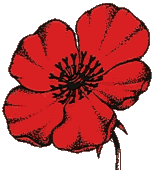 Lest We Forget
Lest We Forget

|

BOND,
Neil A.
AB Radar III, RCNVR
MPK - 14 Feb 1945
|

BROWN,
Wilfred L.
AB, RCNVR
MPK - 14 Feb
1945
|
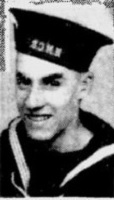
BRUSH,
John C.
O/Tel, RCNVR
killed - 14 Feb 1945
|

BYRNE,
John E.
AB AA3, RCNVR
MPK - 14 Feb 1945 |
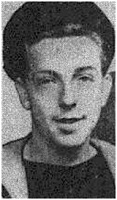
CATHCART,
Norman
AB, RCNVR
MPK - 14 Feb 1945
|
|

CRANG,
William R.N.
AB LR III, RCNVR
MPK - 14 Feb 1945
|

HARPER,
Melvin R.
Ord. Tel, RCNVR
MPK - 14 Feb 1945 |
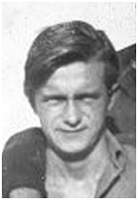
HUNTER,
Ian W.
M.M., V12919, RCNVR
MPK - 14 Feb 1945
|

KENNY,
James A
AB, RCNVR
MPK - 14 Feb 1945
|

LONG,
Gordon P.
OS, RCNVR
MPK - 14 Feb 1945
|
|

NAYDO,
Michael J.
AB, RCNVR
MPK - 14 Feb 1945
|
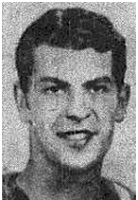
NEWBIGGING,
William
AB, RCNVR
killed - 14 Feb 1945
|

PARK,
William R.
AB, RCNVR
MPK - 14 Feb 1945
|

PURDY,
Gordon F.
Sto 1c, RCNVR
killed - 14 Feb 1945
|

ROUTH, John
M.
MPK - 14 Feb 1945
|
|
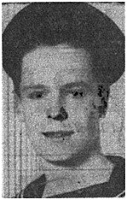
WRIGHT,
James B.
AB, RCNVR
killed - 14 Feb
1945
|
|
|
|
|
Press
release on the destruction of 5 MTBs of the 29th MTB Flotilla and Casualty
List
Articles
on the destruction of the 29th MTB Flotilla and Casualty List
Bystander looking at the burning remnants
of the MTB is Ostend Harbour
Source: RCN facebook page.
Photographer unknown
Remains of the 29th Flotilla at Ostend
From the collection of Emery Savage
Courtesy of Jessica Santos
Click on the above photo to
view large images
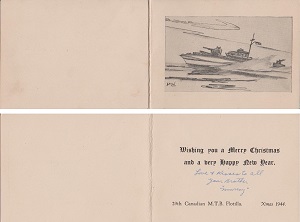
29th MTB Flotilla Christmas card - 1944 -
designed by Cdr (then Lt) Tony Law
From the collection of Murray Varrin
Courtesy of Larry Varrin
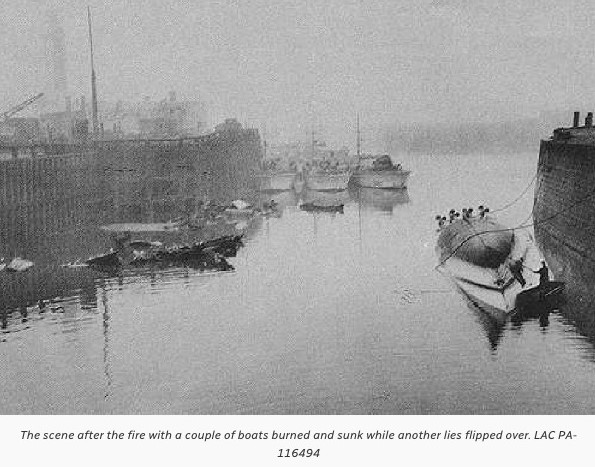
HOME PAGE SHIP INDEX
CONTACT
|
 For Posterity's Sake
For Posterity's Sake


















